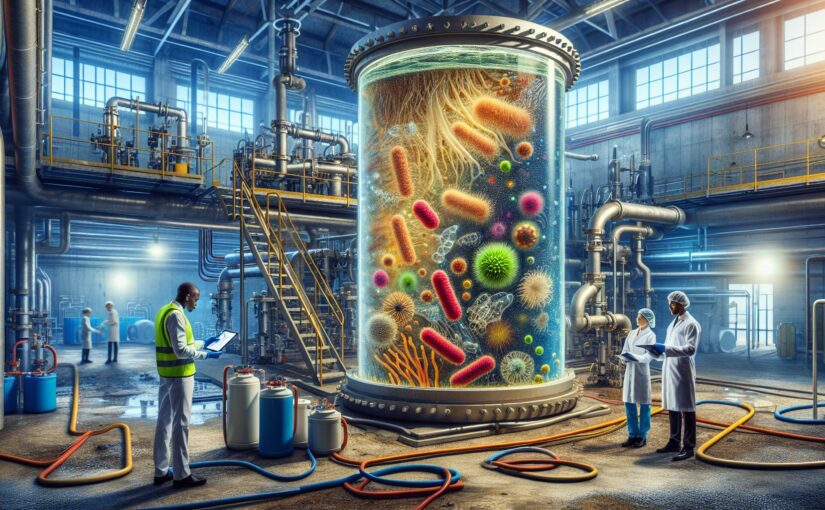With the increasing pressure to achieve sustainability in our environment, efforts are underway to harness and maximise the potential of wastewater. Microbial fuel cells (MFC) represent a revolutionary alternative for wastewater treatment. Through this process, we can convert the pollutant matter in wastewater into electrical energy, making treatment much more sustainable.
Why Microbial Fuel Cells?
Microbial fuel cells (MFCs) have emerged as a promising technology for wastewater treatment. They have an edge over the conventional wastewater treatment methods due to their ability to simultaneously generate energy. While conventional treatment processes usually require an external energy input, leading to higher costs and increased environmental burdens, MFCs instead produce electricity, making them an attractive and sustainable option for wastewater treatment.
How Does It Work?
The operational principle of an MFC is fascinating. It involves the use of micro-organisms as biocatalysts to degrade organic matter and generate electricity. The microbial community oxidises the organic matter present in the wastewater within the anode compartment. This process generates electrons which are transferred to the anode and move towards the cathode through an external circuit, generating electricity. The beauty of MFCs lies in their simplicity. The fuel needed for the process is derived from the organic matter present in the wastewater itself, making them self-sufficient.
The Potential of MFCs
The applications of MFCs are not only limited to power production and wastewater treatment. They could also be used for the recovery of valuable resources from wastewater. Moreover, MFCs could be configured for applications such as biosensors and biological hydrogen production.
However, it must be noted that while MFCs carry enormous potential, there are also several challenges associated with this technology. Key amongst these include the need to find more effective and efficient bacteria strains, improving the design and materials of the electrodes, and enhancing the operational parameters and configurations of the MFCs. Another challenge lies in moving from bench scale MFCs to full-scale operations.
Nevertheless, wastewater treatment using MFCs appears a promising technology that can reduce the environmental impact, while producing a viable output. By capitalising on the efficiency of these systems, we can tread firmly towards a more sustainable future.
Sources
-
Logan, B.E., Hamelers, B., Rozendal, R., Schröder, U., Keller, J., Freguia, S., Aelterman, P., Verstraete, W. and Rabaey, K., 2006. Microbial fuel cells: Methodology and technology. Environmental science & technology, 40(17), pp.5181-5192. Link
-
Choudhury, P., Prasad Uday, U.S., Bandyopadhyay, T.K., Ray, R.N. and Bhunia, B., 2017. Progress and challenges in microbial fuel cells (MFCs): Part 1—Environmental applications. Biofuels, 8(1), pp.55-72. Link
-
Sharma, Y. and Li, B., 2010. Theoretical and experimental performance analysis of a microbial fuel cell for application to industrial wastewater treatment. Water Environment Research, 82(5), pp.403-414. Link
